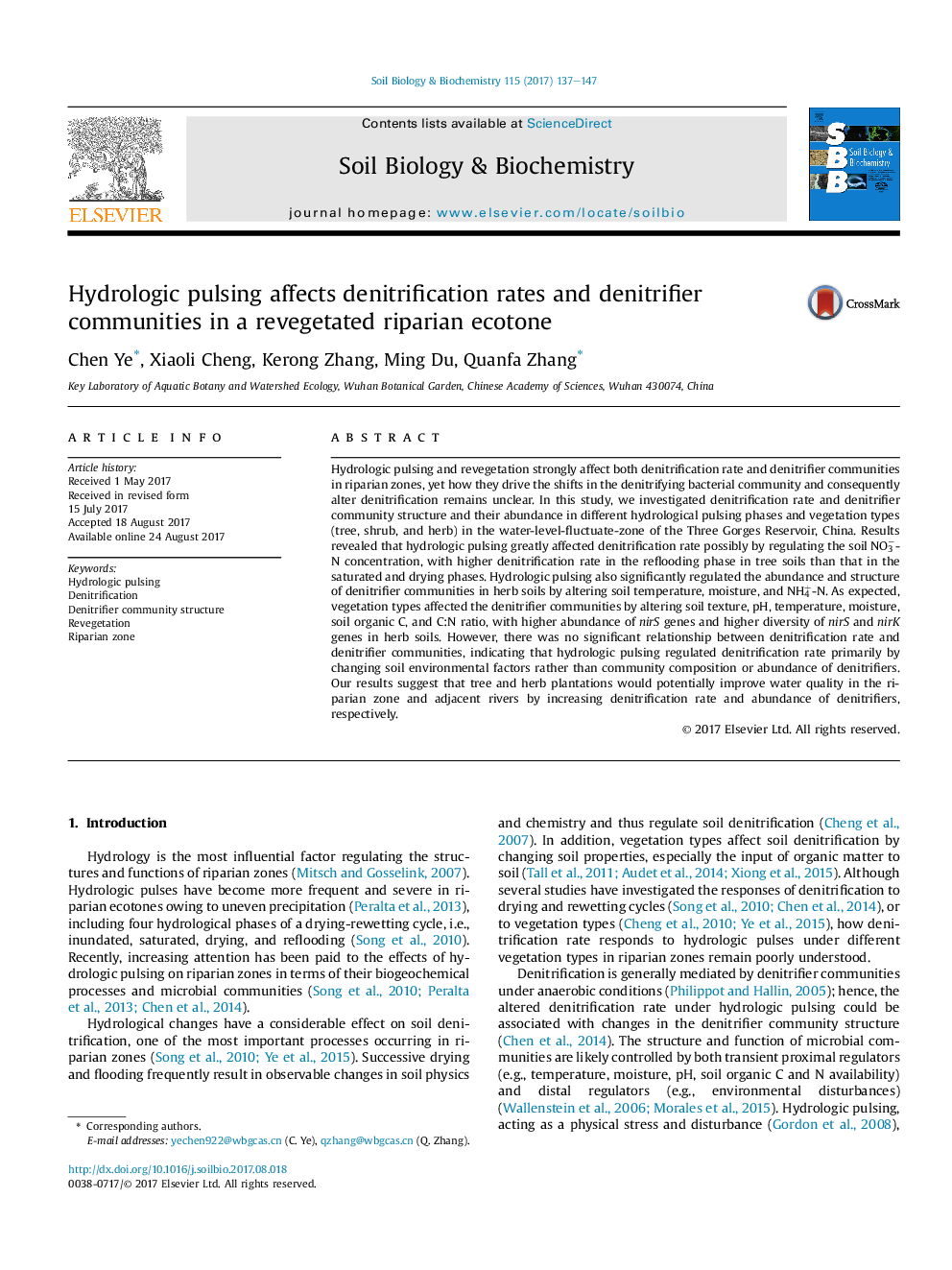| Article ID | Journal | Published Year | Pages | File Type |
|---|---|---|---|---|
| 5516234 | Soil Biology and Biochemistry | 2017 | 11 Pages |
â¢Hydrologic pulsing impacted denitrification and denitrifying communities.â¢Herb increased abundance of nirS and diversities of nirS and nirK genes.â¢Soil pH, temperature, moisture, C and N significantly correlated to nirS and nirK.â¢Soil NO3â-N was possibly a better predictor of denitrification than nirK or nirS.
Hydrologic pulsing and revegetation strongly affect both denitrification rate and denitrifier communities in riparian zones, yet how they drive the shifts in the denitrifying bacterial community and consequently alter denitrification remains unclear. In this study, we investigated denitrification rate and denitrifier community structure and their abundance in different hydrological pulsing phases and vegetation types (tree, shrub, and herb) in the water-level-fluctuate-zone of the Three Gorges Reservoir, China. Results revealed that hydrologic pulsing greatly affected denitrification rate possibly by regulating the soil NO3â-N concentration, with higher denitrification rate in the reflooding phase in tree soils than that in the saturated and drying phases. Hydrologic pulsing also significantly regulated the abundance and structure of denitrifier communities in herb soils by altering soil temperature, moisture, and NH4+-N. As expected, vegetation types affected the denitrifier communities by altering soil texture, pH, temperature, moisture, soil organic C, and C:N ratio, with higher abundance of nirS genes and higher diversity of nirS and nirK genes in herb soils. However, there was no significant relationship between denitrification rate and denitrifier communities, indicating that hydrologic pulsing regulated denitrification rate primarily by changing soil environmental factors rather than community composition or abundance of denitrifiers. Our results suggest that tree and herb plantations would potentially improve water quality in the riparian zone and adjacent rivers by increasing denitrification rate and abundance of denitrifiers, respectively.
